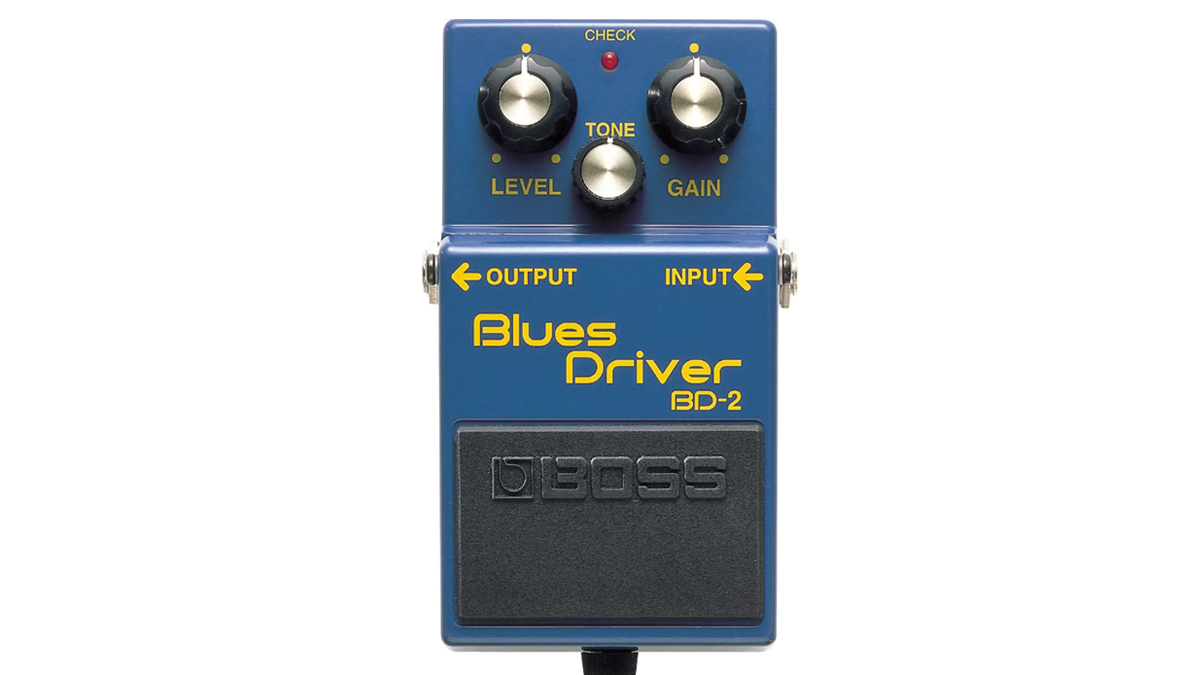Boss overdrive pedals: what you need to know about the company's classic drives
We take a closer look at the essential evolution of one of the most important stompboxes of all time

In the hard-rock era of the '70s, the sound of overdriven Marshall stacks filled stadiums around the globe (and terrified the parents and neighbours of bedroom guitarists everywhere).
These were the good old days of LOUD – when tone equalled eardrum-splitting volume and rocking guitar players were, for better or worse, antisocial by nature. Hot on the trail of a more practical solution, amp designers on both sides of the pond increasingly looked towards giving guitarists the option of valve distortion at lower volume.
In the US during the early '70s, Randall Smith of Mesa Engineering answered the call with his ‘Mark I’ Boogie amp featuring cascading preamp gain. And in England, in 1975, Marshall’s Steve Grindrod developed the company’s first ‘master volume’ model, the 2203.
Meanwhile in Japan, the first of Roland’s Boss-branded effects pedals were developed, hitting the shelves in 1976. By the following year, Boss had well and truly coined the term ‘overdrive’ with the release of the OD-1 Over Drive compact pedal.
Boasting valve-like asymmetrical clipping, it proved an immediate success as guitar players suddenly found they had the world of overdrive placed conveniently at their feet, regardless of which amplifier they happened to be plugged into.
1. OD-1 Over Drive
In some ways, the 1977 OD-1 Over Drive was the successor to Boss’s fledgling ‘large-box’ format DB-5 Driver pedal. But with two knobs simply labelled Over Drive (“soft distortion” according to the manual) and Level, the OD-1 is a far less complicated unit. Which is perhaps one of its greatest strengths.
It still sets a benchmark for all that followed, briefly being reissued as part of the ‘traffic light’ Box-40 commemorative set. Not to be confused with the digital OD-1X Over Drive released in 2014, the OD-1 was in production from 1977 until 1985 when it was supplanted by the OD-2 Turbo Over Drive.
All the latest guitar news, interviews, lessons, reviews, deals and more, direct to your inbox!
This four-knob unit – featuring Level, Tone, Drive and Turbo On/Off controls – was then superseded by the Remote switch-compatible OD-2R Turbo Over Drive in 1994 (discontinued in 1999). The three-knob (Level, Drive and Tone) OD-3 Over Drive appeared in 1997 and is still in production.
2. SD-1 Super Over Drive

Released in 1981, the SD-1 Super Over Drive may look similar to the OD-3 Over Drive in terms of finish and controls (Level, Tone and Drive), but they have distinct circuits that sound quite different.
Whereas the OD-3 produces a transparent/flat EQ response, the SD-1 is based on the asymmetrical clipping circuit of the original OD-1 Over Drive and, therefore, has an inherently midrange-focused character (centring around 800Hz). However, with less low-end roll-off, the SD-1 produces a fuller sound than the OD-1, while a Tone knob provides greater control.
Sporting dual channels (Crunch and Lead) along with stacked Level, Tone and Drive knobs, the SD-2 Dual Over Drive is a significantly more complex pedal and was on the market for a comparatively short time between 1993 and 1998. Much like the OD-2R Turbo Over Drive, a Remote function enables the user to toggle between modes using an external footswitch.
3. OS-2 Over Drive/Distortion

In 1978, Boss released its best-selling compact pedal, the DS-1 Distortion. And though the terms ‘overdrive’ and ‘distortion’ are not mutually exclusive, this iconic orange stompbox drew a line in the sand between the “mild distortion” of the OD-1 Over Drive and its own more heavily saturated, harmonically rich flavour.
Nevertheless, the distinction between ‘overdrive’ and ‘distortion’ can be blurry, and the OS-2 Over Drive/Distortion seeks to blur it even further by blending two sounds from either camp.
In addition to the standard Level, Tone and Drive knobs, the OS-2 mixes asymmetrical soft-clipped overdrive with symmetrical hard-clipped distortion (respectively labelled OD and DS) via its Color knob. With this Color control positioned at 12 o’clock, you can achieve an equal mix of overdrive and distortion, while fully counterclockwise and clockwise settings isolate the effects.
4. BD-2 Blues Driver

In 1995, Boss launched an appropriately coloured variation on its guitar overdrive pedal formula: the BD-2 Blues Driver. For guitarists leaning towards the subtle techniques and nuances of blues, the BD-2 effectively reproduces the natural crunch of a valve amp pushed into break-up while retaining signal clarity and dynamics.
As the internet-led boutique boom of the 1990s and 2000s gathered momentum, enthusiasts began to offer pedal mods, with the BD-2 being a popular candidate for a makeover.
Some bigger names offering such services included Robert Keeley of Keeley Electronics, Mike Piera of Analog Man, and Josh Scott of JHS Pedals (who later went on to collaborate with Boss on the JB-2 Angry Driver). Similarly, Boss revamped some of its classic designs in the Waza Craft range of compact pedals, including the BD-2W Blues Driver and the SD-1W Super OverDrive.
Rod Brakes is a music journalist with an expertise in guitars. Having spent many years at the coalface as a guitar dealer and tech, Rod's more recent work as a writer covering artists, industry pros and gear includes contributions for leading publications and websites such as Guitarist, Total Guitar, Guitar World, Guitar Player and MusicRadar in addition to specialist music books, blogs and social media. He is also a lifelong musician.


